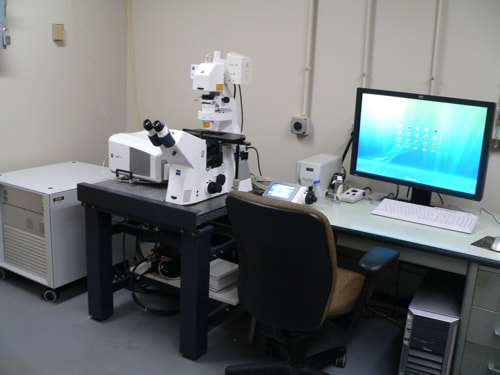Zeiss LSM710 Laser Scanning Confocal
|
New Users
Faculty and students who wish to use the microscope should follow the instructions in the New Users Guide. Training takes ~2 to 3 hrs, with additional mandatory follow-up sessions required until the director determines the user is capable of operating the microscope independently. Users are encouraged to bring their own samples to the training session. If none are available, prepared slides will be used. It is also highly recommended to review the UMD Zeiss LSM710 Quick-Start Guide before training begins.
Policy
The microscope is available to trained users on an equal basis. Individual users may reserve one four hour block of time during "peak" daytime hours, and an additional 6 "off-peak" hours (all other times).
For a comprehensive list of policies (including BSL-2 protocols), please see the Facility SOP.
For a comprehensive list of policies (including BSL-2 protocols), please see the Facility SOP.
Rates
The rate schedule applies to all users and is current for the 2022/2023 academic year. Fees are used to help cover the cost of the service contract on the microscope, which is partially subsidized by the department, and to help pay for materials such as lens paper, lens cleaning solution and mercury bulbs.
System Specifications
|
References
Imaging Core protocols:
Useful links:
Useful links:
Contact Us
|
Dr. Charles Delwiche
Faculty Supervisor [email protected] 301.405.8286 2108 Bioscience Research Building |

